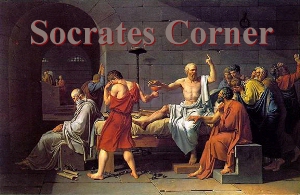Adolf Hitler: The Early War Years (1939-42)
Always before god and the world the stronger has the right to carry through what he wills.”
~ Hitler, Speech in Munich (13 April 1923)
“…[I]t is perfectly true that Nazi[ism] better understood as a maelstrom of prejudices, passions, hatreds, emotions, resentments, biases, hopes, and attitudes that, when combined, most often resembled a religious crusade wearing the mask of a political ideology.”
~ Jonah Goldberg, Liberal Fascism, p. 55
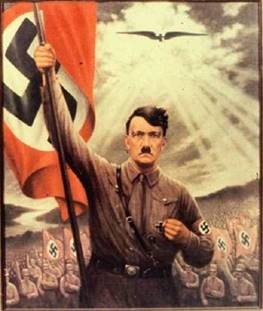
Start of World War II – September 1, 1939
Adolf Hitler’s diabolical designs to conquer Europe were tremendously embolden by the appeasement cowardice of England’s Prime Minister Neville Chamberlain and of Europe’s leaders regarding his twin invasion victories over Austria (the Anschluss, March 12, 1938), followed by Hitler’s invasion of Czechoslovakia codified in the Hitler-Chamberlain or Munich Pact (September 30, 1938). However, before unleashing his vengeance upon Europe in World War, Hitler had to secure his Eastern flank before launching against Western European. Thus, Hitler secured a Non-Aggression Pact with Stalin’s Soviet Russia (e.g., Molotov – Ribbentrop Pact, 23 August 1939) – a phony peace treaty Hitler had no intention on keeping and would soon break this treaty several years later, much to Stalin’s surprise, when Hitler attacked the Soviet Union in June 1941 under Operation Barbarossa.
According to the Military Companion to Military History, in 1938 at the eleventh hour Hitler retreated from prematurely going to war with Europe over the Sudetenland, a large area to in Germany’s south; a northwestern province of Czechoslovakia which had a large German-speaking population. Hitler needed this land to support the Nazi social policy Lebensraum (living space), yet he greatly regretted assenting to a peaceful resolution of hostilities at Munich (30 September 1938) which for years Hitler considered his most egregious political and tactical error. Nevertheless Hitler would have his revenge 11 months later when on 1 September 1939, Hitler in spectacular fashion did violate the Munich Pact and launched World War II against France and Britain. Nevertheless, he failed to convince Poland to surrender itself to Germany thereby protecting Germany’s eastern flank. Thus, out of military necessity and in revenge Hitler would start World War II by unleashing his brutal Blitzkrieg (lighting war) first against Poland before turning his pathological hatred to the West. His Hitler-Stalin Non-Aggression Pact (23 August 1939), was designed only to by him time; to expedite the speedy conquest of Poland and prevent any blockade by Russia. Hitler’s Machiavellian strategy was based on his supposition that concessions given to Stalin’s Soviet Union would be easily reacquired once Germany turned East in Operation Barbarossa (June 22 – Dec. 5, 1941). But those plans to betray Stalin were things to come; for now Hitler’s Blitzkrieg was focused like a laser beam hellbent on destroying Poland with characteristic Nazi velocity, efficiency and brutality.
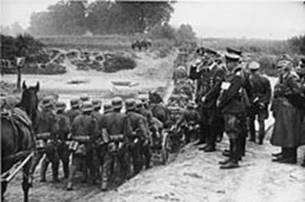
In the beginning, Hitler had wanted to launch his Blitzkrieg attack in the West by the late fall of 1939, yet bad weather – which would have stalled maximum use of his Luftwaffe (air force) – and war strategy arguments Hitler incessantly had against his Nazi Generals led to suspension of his invasion of France until the spring of 1940. In the interim, following the request of Admiral Erich Raeder, in April 1940 Hitler decided to invade Norway to expedite the Nazi navy’s entrance into the North Atlantic, according to the Military Companion to Military History. Upon the advice of General Erich von Manstein, Hitler shifted the principal focus of attack in the West from the northern to the southern part of Europe where the Nazi military forces were to attack the Low Countries. This revised strategy, Hitler hoped, would then prevent the Allied forces from helping the Belgians and the Dutch.
The Battle of France (10 May – 25 June 1940)
Hitler’s innovative strategy to invade France in the beginning appeared to work when the Germans in a few days broke through the French defenses called the Maginot Line and, under two weeks extended the Reich Army to the Channel coast behind the Allied forces. The Maginot Line was named after the French Minister of War André Maginot and comprised of a succession of concrete earthworks, defensive barricades, obstacles, and weapons battlements that France constructed along its border with Switzerland and its borders with Germany and Luxembourg during the 1930s.
France made a horrible tactical blunder which the Nazis would exploit militarily against the Allied forces specifically that the Maginot line did not extend through to the English Channel because the French military did not want to compromise Belgium’s neutrality (see map below). Of course Hitler and the Nazis did not share Belgium’s neutrality policies, thus this tactical error by the Allied forces allowed the Nazis to easily invade France through Belgium by going around the Maginot Line; a brilliant tactical move that perhaps saved tens of thousands of Nazi causalities. Nevertheless, before Hitler commanded Herman Goering’s Luftwaffe (the Nazi air force) to destroy the now isolated Allied forces, on the advice of German commander, Gerd von Rundstedt, the Germans wanted to establish strategic positions in the south to prevent the French from moving the Maginot Line defensive earthworks and military barricades which would hinder the German army’s progression to Paris.
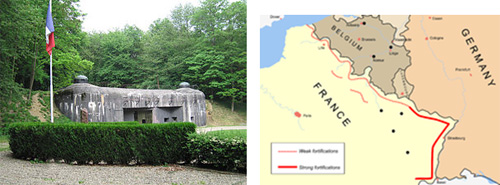
As it became clear that many Allied forces soldiers might escape, the direction of the German armor was reversed again, but too late to halt the evacuation of much of the British Expeditionary Force and many French soldiers reminiscent of the devastating retreat at Gallipoli – The Gallipoli Campaign of 1915-16, also known as the Battle of Gallipoli or the Dardanelles Campaign, was an unsuccessful attempt by the Allied Powers to control the sea route from Europe to Russia during World War I. In May 1940, the Germans continued their march southward until their relentless and systematic attacks caused a rapid breakdown of residual French resistance forces by early June, and this comprehensive conquest gave Hitler an appearance of triumph, convincing Hitler that he had finally achieved the unflinching loyalty of the majority of Germany’s military officers, particularly as he methodically allied his officers to himself by various schemes including liberal promotions and a system of universal bribery and corruption.
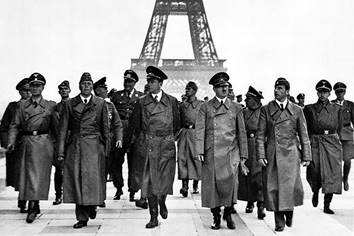
With the fall of France in June 1940, it appeared as if the Nazis were triumphant and the war was essentially finished, therefore Hitler, in characteristic arrogance and the Nazi Reich foolishly launched war plans against the United States and against the Soviet Union. This violated the First Principles of Warfare – Never fight a war on two fronts – and would eventually lead to the beginning of the fall of Hitler and his Third Reich. Hitler’s megalomania and narcissism would prove to be his undoing as throughout the war he remained in existential, internecine battles with his own top Generals. For example, by July 31, when initially planning to invade Stalin’s Soviet Union in the fall of 1940, after much debate, Hitler conceded to the advice of his military staff, delaying his surprise attack of Russia to June 1941 in Operation Barbarossa. Ironically, this rare occasion where Hitler listened to his Generals over his own narcissistic counsel would soon become his most spectacular military disaster in World War II.
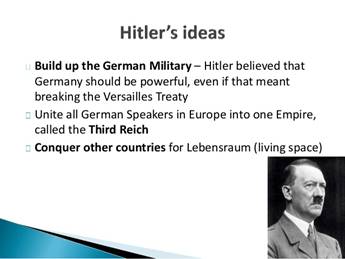
Chamberlain out, Churchill in
After his disastrous political move signing a phony peace treaty with Hitler – the Munich Pact in September 1938, the outraged British people forced Prime Minister Neville Chamberlain out of office and installed his hated enemy, Winston Churchill on 10 May 1940. Under this great wartime leader England doggedly refused to take defeat as France did, therefore, Hitler and his Nazi command would make Britain pay dearly in blood. Hitler’s war strategy combined three military tactics to force England out of the war – First, the German Luftwaffe (air force) would put an end to the Britain’s ability to protect itself where there would be a brutal offensive by the Nazi air force that almost destroyed London and other major cities in England. Second, the anticipated speedy defeat of Stalin’s Soviet Union would eliminate that country as a potential ally to provide military assistance for Britain and, third, by ending any threat to Japan’s flank only embolden this Asian military Colossus to invade the Pacific and attack the United States which they did in a surprise attack of U.S. Navy ships and planes stationed at Pearl Harbor on December 6, 1941.
Battle of Crete
Since Hitler would soon be fighting World War II on two fronts – against Russia and America, he desperately needed Japan to join his war as an Axis Power against Britain and in return, promised to ally with Japan in their war against the United States. Thus the Nazis presupposed that this tactic would enable the Germans to use Japan’s navy for war against the United States. After a brief military operation in the Balkans to protect what Hitler believed a defenseless southern flank and to secure this military position for Germany, Hitler ordered his Luftwaffe to invade the Isle of Crete in what was called the Battle of Crete (20 May – June 1, 1941). Unfortunately for Hitler and the Nazis, this battle would become his most disastrous military operation for the Luftwaffe that essentially destroyed the German air forces and prevented the Germans from launching any further major airborne operations from that point to the end of the war.
With no navy and now no air force, and fighting a war on two fronts, the Germans faced mounting casualties which would begin their systematic retreat back to Berlin where an ultimate cataclysmic defeat awaited Hitler and the Nazis in less than four short years.
Battle of Russia (“Operation Barbarossa”)
On 22 June 1941, Hitler launched Operation Barbarossa a Nazi military campaign that dramatically broke with the Hitler – Stalin Non-Aggression Pact of August 1939 and sent 4–5 million Axis troops with the expressed command to destroy the Soviet Union and to occupy Moscow as soon a militarily possible. Stalin was shocked and caught totally off guard by Hitler’s duplicity as the German invasion of the Soviet Union initially appeared to be wildly successful at first as the Blitzkrieg roared so fast eastward across the German border with Russia, that the German forces frequent outpaced their supply lines. However, Hitler had waited too late to begin Operation Barbarossa and with the notoriously cold Russian winters coming early in that year combined with effective counterattacks by Stalin, especially the subsequent years in the Battle of Stalingrad (23 August 1942–2 February 1943), these counter measures eventually led to the severing the Nazi Reich supply lines. Therefore, the Nazis initial early success after a few months quickly devolved into chaos and mass retreat much to Hitler’s rage and fury. The original Nazi strategy was intended to bring the Soviet Union to a fast annihilation in a matter of few weeks, yet Hitler’s generals knew that from a military and strategic perspective this scenario would be very unlikely and predicted a terrible defeat of Nazi army in Russia.
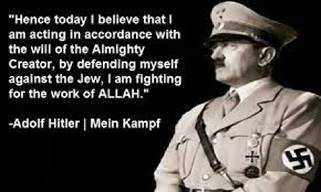
Since Hitler viewed himself as a military and strategic genius, he had the final word virtually every military operation particularly in the Battle of Russia including on which targets to attack and whether or not to retreat, which he often delayed too long causing needless German army causalities and war prisoners for Stalin. Therefore, Hitler was fighting two wars – one with Stalin and his forces who drew the Nazi military deeper into the abyss of the Russian winter; the same merciless Russian winters which 130 years earlier defeated the French armies of the great Napoleon numbering 600,000 in the French invasion of Russian or the War of 1812 (24 June – 14 December, 1812). Hitler’s second existential war was always with his Generals who believed that Hitler’s crazy military decisions would eventually cause the Nazi Reich to lose World War II… and they were right
From October-December 1941, as the early Russian winter set in, the war dramatically shifted in favor of the Soviets and against Germany, as arguments over war tactics and strategy occurred constantly. Always psychotic and delusional regarding his military prowess, Hitler believed by his sheer Will to Power (one of Hitler’s favorite philosophical worldviews coined by the German philosopher, Friedrich Nietzsche), that he could rally his forces to defeat the Soviets, while some generals were endeavoring to discover a more strategic manner of retreating and saving millions of Nazi soldiers from the crucible of Stalin’s military which dogged the Nazis at every opportunity. When Japan attacked the U.S. Navy fleet at Pearl Harbor on December 6, 1941, all of Hitler’s generals strongly advised against waging war with the United States. Hitler ignored them and declared war against America on December 11, 1941. Finally, in early 1942 Hitler’s generals were able to convince him to abandon his offensive in the East towards Russia’s capital Moscow, and shift their military operations on striking in the South, however this strategy also ended in spectacular disaster at the Battle of Stalingrad (23 August 1942–2 February 1943). Between Operation Barbarossa and the Battle of Stalingrad Hitler’s military catastrophes and incompetence would cost nearly 5 million Nazi Reich soldiers who were killed or became prisoners of Stalin’s brutal gulag.
Hitler, Progressives and the Revolution of Nihilism
Conservative writer and editor at the National Review, Jonah Goldberg in his celebrated 2007 book, Liberal Fascism, wrote about how “Hitler’s ideological coherence left a great deal to be desired. His opportunism, pragmatism, and megalomania often overpowered any desire on his part to formulate a fixed ideological approach.” This existential, psychotic hatred of ideology I believe freed Hitler from all restraints of logic, rationalism, and morality. “Always before god and the world the stronger has the right to carry through what he wills,” Hitler would declare.
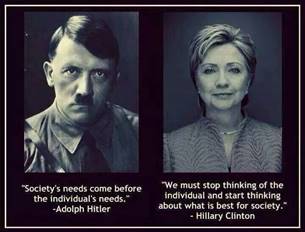
Returning to Goldberg’s book he continued, “Hermann Rauschning, an early Nazi who broke with Hitler, encapsulated this point when he famously dubbed Hitler’s move “The Revolution of Nihilism.” According to Rauschning, Hitler was a pure opportunist devoid of loyalty to men or ideas – unless you call hatred of Jews an idea – and willing to break oaths, liquidate people, and say or do anything to achieve and hold power. “This movement is totally without ideals and lacks even the semblance of a program. Its commitment is entirely to action . . . the leaders choose action on a cold, calculating and cunning basis. For National Socialists there was and is no aim they would not take up or drop at a moment’s notice, their only criterion being the strengthening of the movement.” Rauschning exaggerated the case, but it is perfectly true that Nazis better understood as a maelstrom of prejudices, passions, hatreds, emotions, resentments, biases, hopes, and attitudes that, when combined, most often resembled a religious crusade wearing the mask of a political ideology,” wrote Goldberg…. “Without the loudspeaker,” Hitler once observed, “we would never have conquered Germany.”
When will America, Europe, and the civilized peoples of the world wake up and start looking at the shocking similarities between Nazi National Socialism and Obama Democrat Socialism? As a historian of the Nazi Era, I have been systematically chronicling these tragic comparisons of socialism in a series of detailed historical essays. Once people, particularly young students, begin studying this history with an open mind, they will of necessity realize that both Socialist philosophies are devoid of a fixed set of ideas or Weltanschauung (worldview). Rather than what they are for, National Socialists and Democrat Socialists can be more accurately defined and studied historically by what or who they are against – deconstructing, perverting, and destroying every vestige of the Judeo-Christian traditions and institutions in America, in Europe, and throughout the world, by any means necessary. Indeed this is “the Revolution of Nihilism” of Hitler and the Nazi Era, or what I call The Progressive Revolution: History of Liberal Fascism through the Ages.
Book Notice
Please purchase my latest opus dedicated to that Conservative Colossus, Supreme Court Justice Clarence Thomas. Here are the latest two new volumes from my ongoing historical series – THE PROGRESSIVE REVOLUTION: History of Liberal Fascism through the Ages (University Press of America, 2015):
However, before the book is officially released to the public, I have to place 100 pre-publication orders (50 orders per each volume). I need your help to make this happen ASAP. Please place your order today for Volume 3 & Volume 4. Of course, if you can order all 100 copies today, the book will become official tomorrow.
Please circulate this flyer to all your email contacts & Facebook/Twitter followers who may be interested in purchasing this opus which will serve as a ready apologetic against the rampant Marxist-Progressive propaganda taught in America’s public schools, colleges, universities, graduate schools, and law schools. Thanks in advance to all my friends, associates and colleagues for your invaluable support! Law and History Blog: www.EllisWashingtonReport.com
I am starting a new a program on my blog dedicated to giving young conservatives (ages 14-35) a regular place to display and publish their ideas called Socrates Corner. If you know of any young person who wants to publish their ideas on any subject, have them send their essay manuscripts to my email at ewashington@wnd.com .
© Ellis Washington
Category: Commentary




